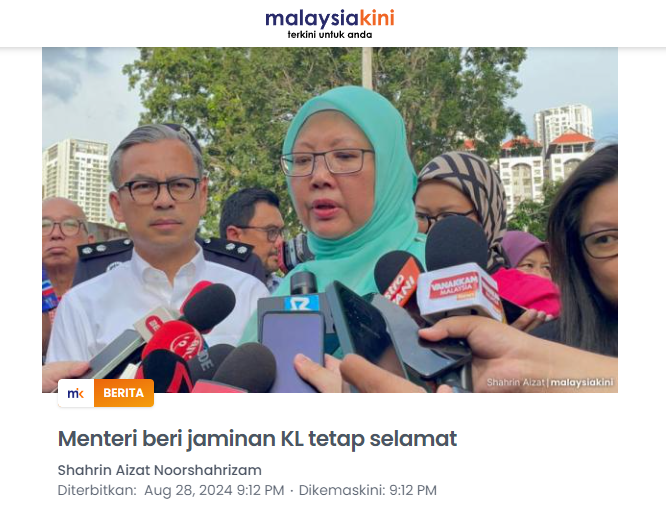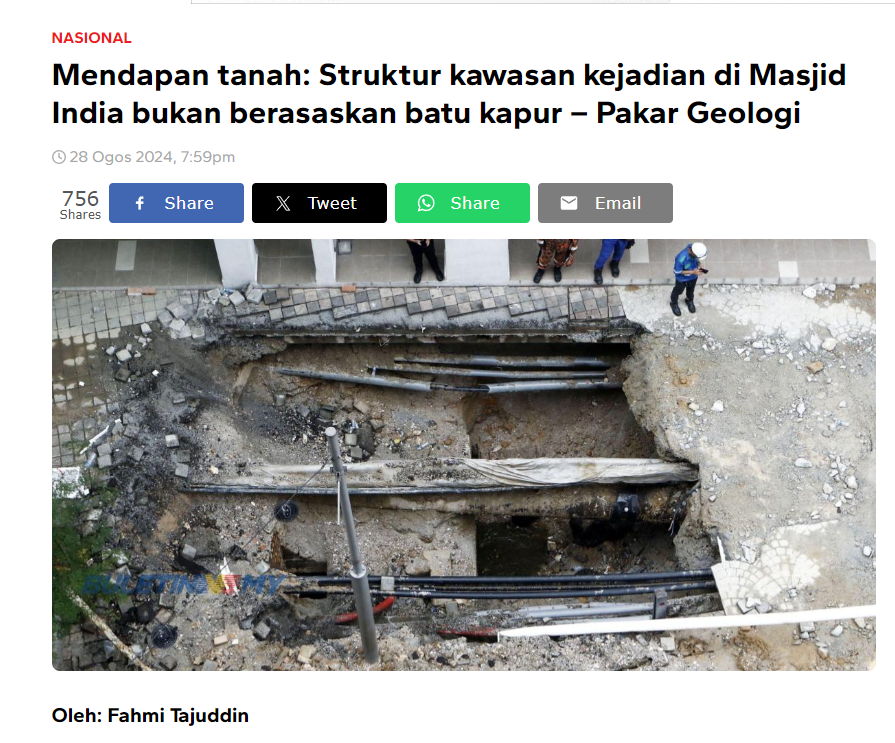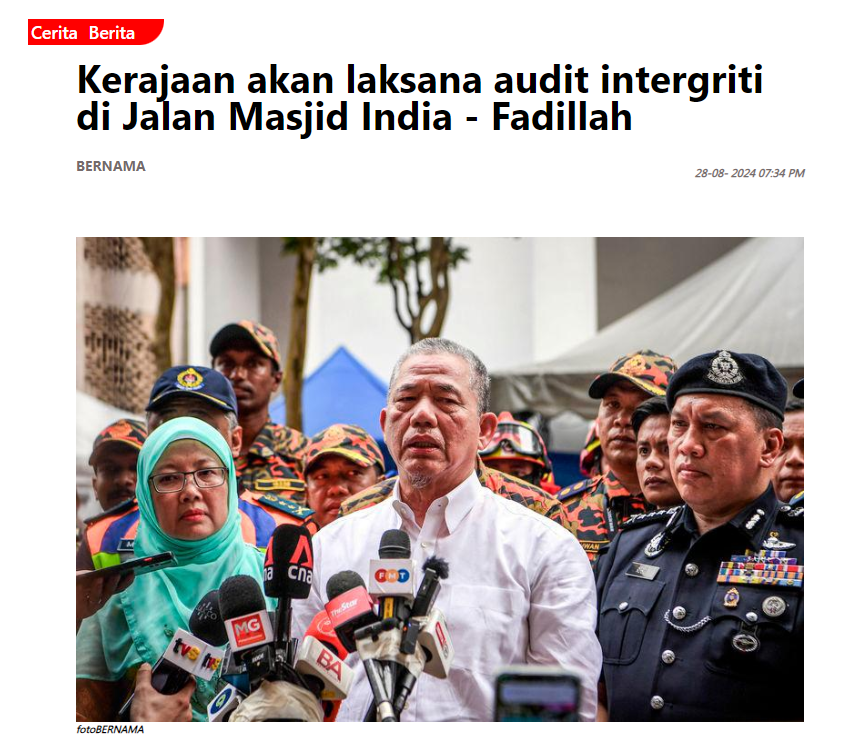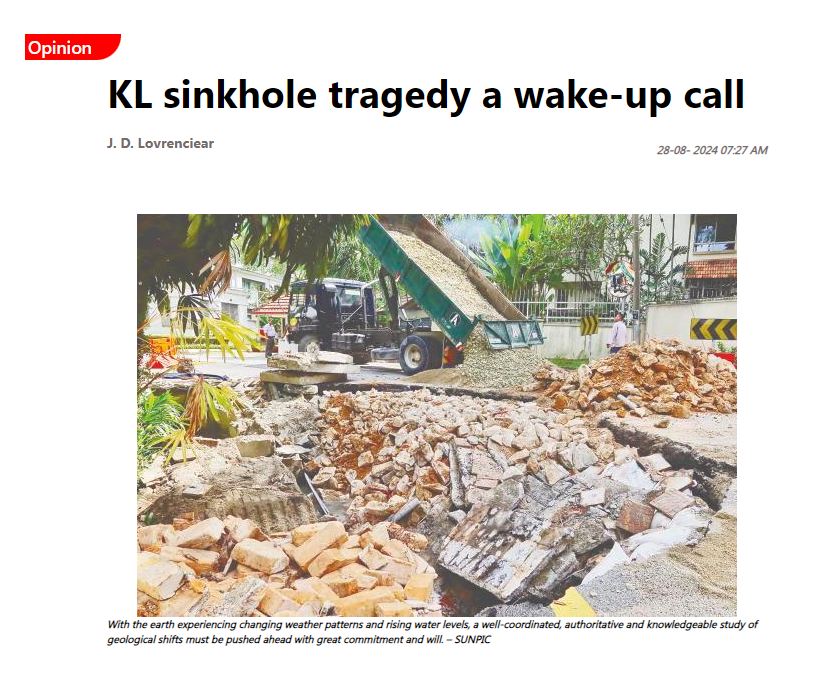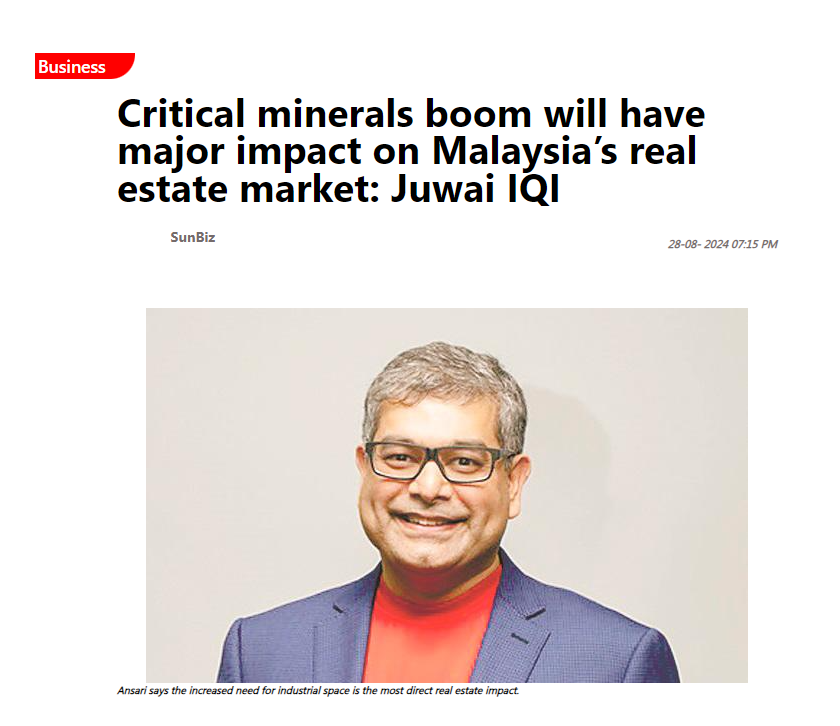
PETALING JAYA: Without the materials called “rare earths” and “critical minerals,” electric cars will not run, laptop computers will not boot up, solar panels and wind turbines will not generate power and mobile phones will not make a single call.
The shift to green energy is supercharging the demand for critical minerals, and Malaysians stand to benefit, according to analysis released yesterday by Juwai IQI.
Juwai IQI co-founder and group CEO Kashif Ansari explained, “Rare earths are called that because they are usually found only in low concentrations, making mining less viable. They also require separation and purification to make them usable. The market is worth RM1.4 trillion. That is already massive, but it’s just the beginning.”
By 2040, he said, the market will swell to RM3.4 trillion, fuelled by the need for materials that power electric cars, wind turbines and solar panels.
“Malaysia is home to one of the largest critical mineral refining facilities in the world, owned by Australian company Lynas. The plant is a testament to Malaysia’s growing influence in a world where green technology is becoming increasingly important.
“You can see how much rare earths and critical minerals could add to Malaysian’s wealth when you realise that the Lynas plant, just by itself, has contributed RM3 billion in foreign direct investment, RM1.5 billion in exports, RM9.4 million in taxes paid, and RM65 million in wages paid to local workers.
“The average income of Lynas employees is four-times larger than the local average in Pahang,” said Ansari.
For Malaysia, he added, the trend means an opportunity to build a stronger economy.
The country’s rich reserves of critical minerals, combined with its strategic location and industrial strength, position it perfectly to take advantage of this demand.
“Malaysia’s reserves of what are called ‘rare earth elements’ can create more high-paying jobs and export income. Companies around the world are eager to find new suppliers,” he said, adding that for everyday Malaysians, this opportunity translates into real benefits.
By expanding its role in processing and manufacturing these minerals, Ansari said, Malaysia can create jobs, drive economic growth and ensure that the country remains competitive on the global stage.
“Government initiatives like the New Industrial Master Plan 2030 are helping make this promise into reality.
“Malaysia has a total of RM4.1 trillion worth of mineral resources, including RM745 billion worth of rare earths. The estimated value of Malaysia’s metallic minerals alone is RM1 trillion,” remarked Ansari.
However, he said, becoming a larger exporter of critical minerals also has risks, including the risk of environmental damage if the industry is not managed sustainability.
“With smart investments and a focus on sustainability, we believe Malaysia has the potential to help lead the global green energy revolution. That will create a brighter, wealthier future for all its citizens, he said, adding that Juwai IQI is a real estate and technology company, so they look at the critical minerals opportunity from the perspective of its impact on the real estate market.
“The critical minerals boom will have a significant impact on Malaysia’s real estate market, increasing demand for industrial space and land where mineral reserves are present, driving new residential and commercial development, and helping push up property demand and the values of the homes Malaysians own.
“The increased need for industrial space is the most direct real estate impact. As Malaysia ramps up its role in refining and processing critical minerals, companies will need factories, warehouses, and logistics hubs
“The new mining and processing investment will also spur residential and commercial real estate development in key regions. We especially expect this in Pahang, Perak and Kedah, because they have rich deposits of critical minerals,” said Ansari.
“The Lynas plant I mentioned is located in Pahang, for example. Nearly all homeowners will also benefit as the regions involved in the critical minerals supply chain see their economies boom. This will create local wealth and boost incomes and opportunities nationwide by enriching the national accounts. Expect to see a direct impact on property values. When Malaysian families find they have more money in the bank, they will want to buy bigger and more convenient homes,” he added.



